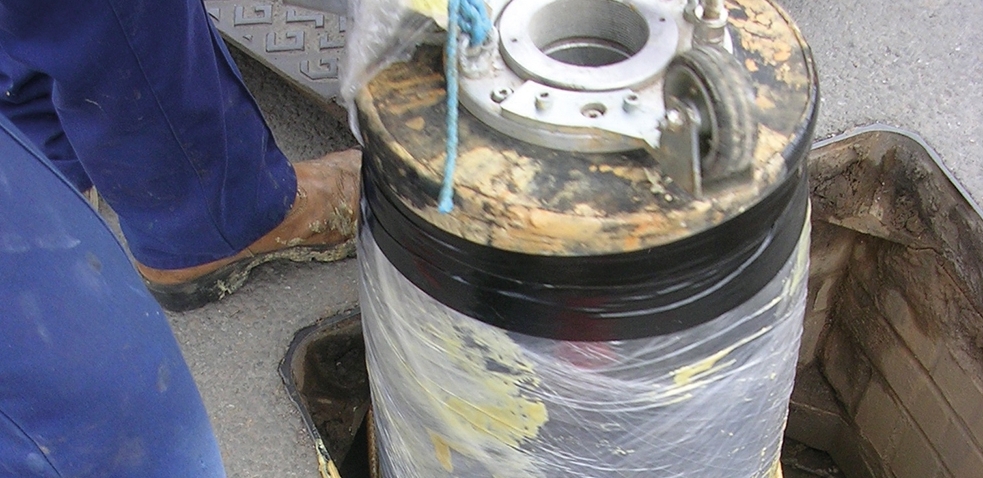By Glenn Cartledge, (MD of Source One Environmental)
Trenchless pipeline repair techniques are widely used in the UK and have been available – tried and tested – now for decades. In fact, the United Kingdom Society for Trenchless Technology (UKSTT) itself celebrated 25 years in existence during 2018. But, with the Health & Safety Executive estimating that around 4 million holes are dug every year by utility companies in the UK, there must be a wider opportunity for these techniques. So, what is holding the industry back?
For those unfamiliar with trenchless techniques, the term encompasses any method of pipeline installation or repair that is achieved without excavation. Trenchless installation methods include horizontal directional drilling and microtunnelling. For repair and renovation, patch repair, point repair, pipe bursting, slip lining and cured-in-place-pipes (CIPP) are all common. Pipes are prepared for renovation using high-power jetting or by the use of cutting and cleaning robots. All of these preparation and repair techniques are effected by access to the pipeline via the manhole.
In addition to techniques that are well-established, there continues to be significant
innovation, with methods and products that further reduce cost or time on site or that offer improvements in the quality or life expectancy of repairs. One example is the development of different curing methods for CIPP lining: this has developed from an ambient cure, through hot water and steam methods, to the current popular method of using a UV light train and to the latest development, using LED technology.
The Government are also investing in further innovation in trenchless repair technologies. At the very end of 2018, they announced finance of some £26.6m in an academic-led project to research and develop robots for this use, headed by the University of Sheffield.
The benefits of trenchless techniques are clear – they can substantially reduce time spent on site, reducing costs and minimising noise pollution and disruption to the surrounding area. The reduction or avoidance of road closures is a significant plus, as the Government has estimated such closures cost the UK economy approximately 5 billion pounds each year – an issue that they are trying to tackle with such measures as extended Lane Rental Schemes, which could further increase costs on site to contractors.
So, why are the available technologies not as widely adopted as they could be and why are some parts of the industry getting left behind?
Source One Environmental (S1E) is a supplier of specialist trenchless technology products. Our experience of the industry suggests a few key barriers to more widespread adoption.
The structure of the Water Industry.
Our products are purchased by specialist installers and contractors for pipeline repair. Often, these companies are sub- sub-contractors to those engaged by the Water Companies. This long line of supply hinders understanding and specification of these methods by those ultimately responsible for the networks.
A focus on cost.
The UK & Irish markets seem to be particularly cost-focused. S1E has sister companies in Europe and the States. None are subject to the constant price pressure we see in our market. This cost-focus approach doesn’t allow for other benefits, such as improved longevity of repair or enhanced structural integrity, to be clear and visible throughout the supply chain.
Lack of awareness or skills.
With no great driver via specification, some repair companies have been slow to adopt trenchless techniques. Some more traditional sections of the industry, particularly in
Image: Showing a UV light train, used to speed up the curing of a CIPP liner.
contracting companies, seem to engage little with press, events or organisations that might bring them into contact with newer methods. Training courses are on offer for such techniques, from as little as £50, so availability of upskilling should not be an issue.
The structure of contracting companies.
The driver for adoption largely emanates from our contractor customers making choices about how they can best provide solutions, rather than from specification by utility companies. For some techniques, such as UV or LED curing techniques, investment is required. Larger and more forward-thinking companies are in a position to make such decisions, but there are still many drainage contractors who are smaller companies, less able to make such a commitment.
Fewer options for clean water networks.
Many of the techniques described have been established for sewer pipelines. Trenchless repair is much less well-established for potable water lines. Polypropylene or polyethylene pipelines, more common for potable water, do not create as strong a bond with current CIPP or patch repair materials. The longer lines, with fewer access points, create issues with accessibility for these repair methods. However, techniques such as slip lining, pipe bursting and spray lining can be a good alternative to traditional methods for clean water.
Overall, it seems that greater involvement from the utilities could be the key to far wider adoption of trenchless techniques, with all of their benefits.




